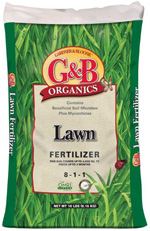|

     
|
 |
Featured Quote: "I love spring anywhere, but if I could choose I would always greet it in a garden." |
 |
|
Beautiful bougainvillea, that evergreen subtropical plant from South America, comes in several different forms. The most common is a vine--a vine that does not twine or cling--but a vine nonetheless. It also comes in a shrub form and a ground cover. The vibrant colors are not the flower, but are colorful bracts surrounding a small, inconspicuous flower. The color show begins in spring and can continue into the winter. Now, you can't ask much more of any flowering plant! A mature vine bougainvillea in full bloom is simply a huge "WOW!" factor in any garden. The vine bougainvillea is a fast grower and needs regular pruning to keep in good form. Because of this vigorous growth, any structure chosen for support must be very sturdy. Yes, they do have thorns. Keep that in mind when you are thinking of the best location in your landscape. Other bougainvilleas have a low-growing form which is perfect for containers. Place containers near the edge of a balcony and the bougainvillea will grow outward and down, spilling color over the outside wall of your home. Great care must be taken when planting bougainvilleas. The roots do not like much handling so do not disturb the root ball. You can cut out the bottom of the pot and plant both bougainvillea and pot. Alternatively, carefully make four vertical cuts down the side of the nursery container and carefully pull all four sides farther apart. Supporting the base of the root ball (not grasping the trunk of the plant), gently remove the plant from the growing container and carefully place it into the ground or new container, remembering that the roots are very sensitive to handling. Bougainvilleas like full sun and regular watering, but not overwatering. If you water too much, they won't bloom. Bougainvilleas come in white, yellow/orange, pink, red, and purple. Plant all one color for a huge color impact, or mix and match colors, to create the look of an impressionist painting. |

|
So, you've decided to design your own garden! This will prove to
be an interesting journey, and if done correctly, the result will provide you
and your family with an outdoor space that you can enjoy for years to come.
Some of these questions will be answered based on your area's size. For
instance, even though you like basketball you may or may not be able to fit a
half-court into your area - but perhaps a basketball hoop could be used. |

|
Tomatoes are the favorite vegetable for home growing. Over the past years, commercial growers have produced tomato varieties that valued shelf-life and unblemished prettiness over taste--and the result has been an almost tasteless tomato at your local stores. You can put taste back on top of the list by growing your own. Tips on Choosing Your Tomato Plants:
Planting tips:
Grow your own tomatoes! Your taste buds will thank you! |

|
Tomato hornworms are the larvae of a large sphinx moth that is about the size of a hummingbird. In spring, the moth lays eggs on the underside of tomato (and related plants like pepper and eggplant) leaves. Although the hornworms are quite small when they first emerge, they are big eaters (of leaves) and grow up quickly. Usually, you won't even see this fellow until it is large--about 2 inches long and fat! They are quite distinctive, actually handsome with their diagonal white stripes and horns on the rear. However, due to their camoflage they can be difficult to find (until they've eaten a lot of leaves). Don't be afraid of the hornworms. They look more frightening than they are. They don't bite or sting, just try to look big and ferocious. You can easily handpick to remove from your plants and just throw them away. When they are younger and smaller, use Bt (bacillus thuringiensis) as an effective management technique. Some gardeners have a different approach to the tomato hornworm. While handpicking a hornworm, look to see if you find little white cocoons attached to its back. If you do see this, that cocoon is a pupating braconid wasp, which is a garden-friend predator. Capture the hornworm and keep it (or all of them) in a container, feeding them tomato leaves. You are creating a nursery for the braconid wasps that can then be released into your garden! These wasps will help control the hornworm population. Other natural predators are birds and the larvae of the green lacewing. Plant your gardens to create an inviting habitat for all of these natural predators, and you'll control this voracious eater of your tomato leaves. Luckily, hornworms don't eat the tomato! |
 |
|
Should I fertilize shrubs before or after rain? Answer: Most organic plant foods need moist soil to break down and allow the beneficial microbes in them to proliferate. If the ground is already moist and you know a measurable amount of rain (at least 1/2") is coming, then apply your fertilizer before. If the ground is dry, allow the rain to replenish the soil with moisture and then apply your fertilizer. After you fertilize, make sure to water the fertilizer in so it percolates into the soil. |
 |
|
A great southern dish for those impatient for the first tomato of the season. It's also useful at season's end when frost is approaching and you still have unripened tomatoes. What You'll Need:
Directions:
[1] You can also use coarse-ground cornmeal or breadcrumbs; if you do, you'll need to first dip the tomato slices into beaten egg. Yield: 4-6 servings |
 click here for a printer friendly version of this page
click here for a printer friendly version of this page
 |
Written content © Garden Partners LLC, or respective authors. All Rights Reserved. Privacy Policy. All written content contained in this site is protected by United States copyright law and may not be reproduced, distributed, transmitted, displayed, published, or broadcast without prior written permission of Garden Partners, LLC. You may not alter or remove any trademark, copyright or other notice from copies of the content. |




